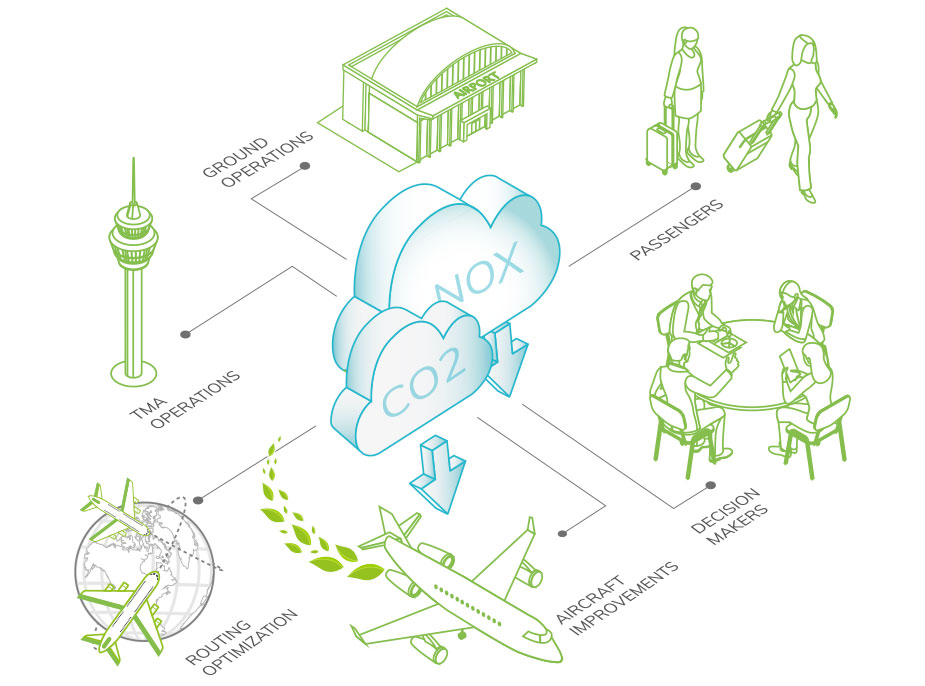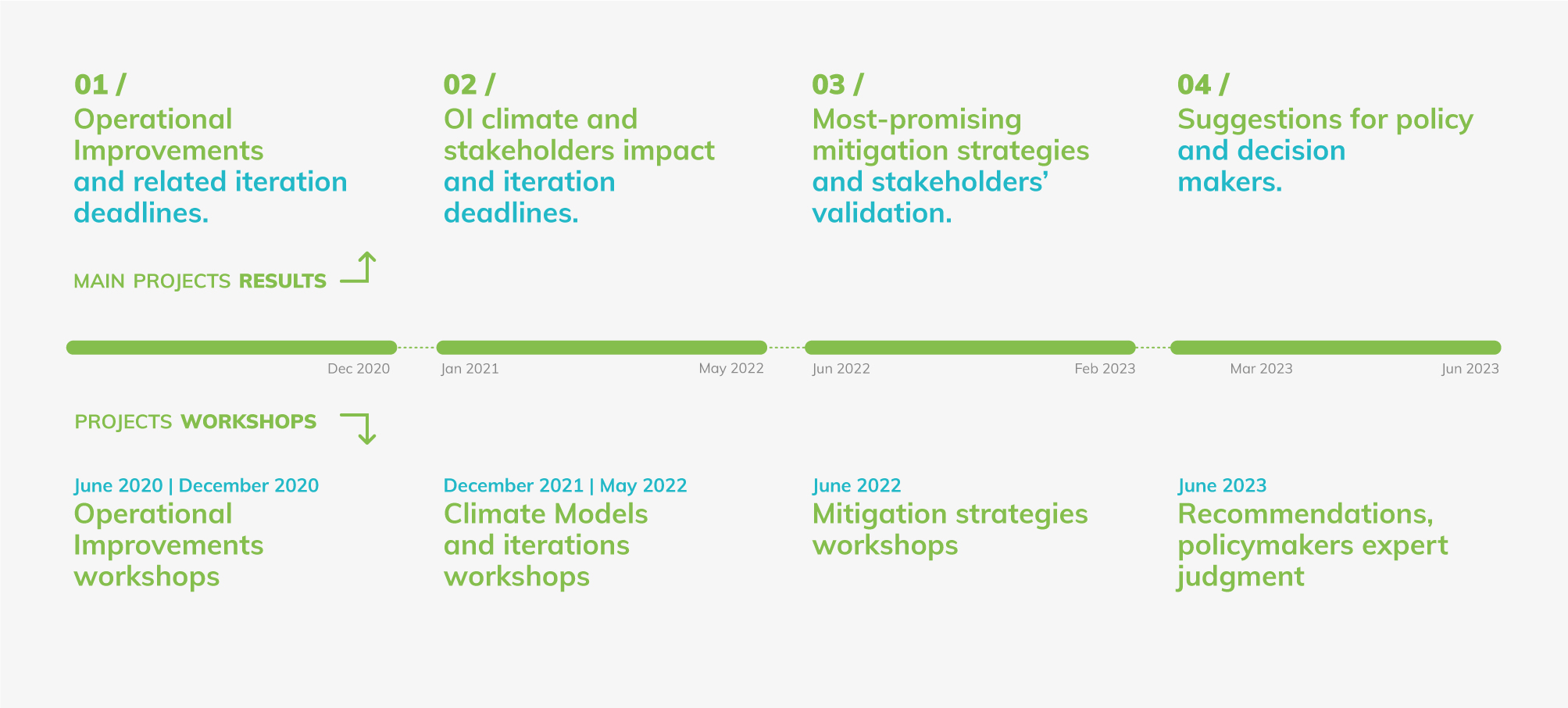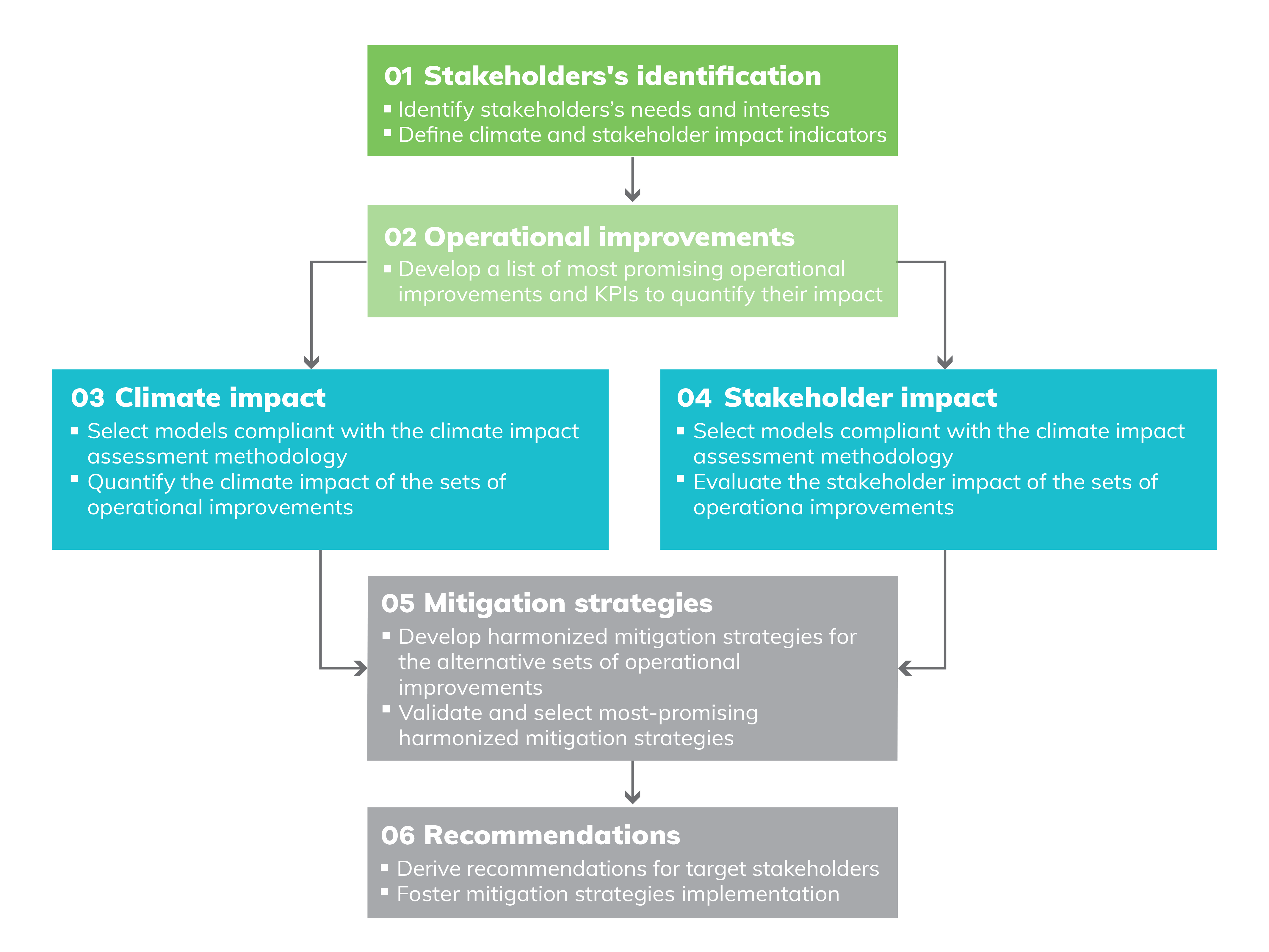
The objectives
ClimOP aims at understanding which aspects of aviation operations can be implemented to reduce the climate impact of the aeronautic industry. With its results, ClimOP aims to contribute to the FlighPath 2050 goals related to the 75% reduction in CO2 emissions, and the 90% reduction in NOx emissions, for a more sustainable aviation. To ease the fulfilment of the main goal, ClimOP activities have been grouped in 5 sub-tasks:

Select operational improvements to reduce the climate impact of aviation.

Assess the climate impact produced by the selected operational improvements.

Evaluate the impact of the operational improvements on aviation stakeholders.

Determine a set of harmonized and most-promising mitigation strategies.

Produce policy recommendations to foster the application of mitigation strategies.
ClimOP highlights
One of the ClimOP main aspects is to focus on stakeholders’ needs. The consortium aims to involve key players in the aviation industry to produce results feasible for their necessities and consistent with the purpose to reduce the climate impact of aviation. The consultation process follows the ClimOP ongoing and production of results, articulated in four main phases.

Approach
Project timeline

Methodology
The methodology employed by ClimOP consists of six steps that put the focus on stakeholders’ needs by using an iterative validation process. The overall goal of the methodology is to allow ClimOP generating a link between its outcomes and the related sectors of interest.


The objectives
ClimOP aims at understanding which aspects of aviation operations can be implemented to reduce the climate impact of the aeronautic industry. With its results, ClimOP aims to contribute to the FlighPath 2050 goals related to the 75% reduction in CO2 emissions, and the 90% reduction in NOx emissions, for a more sustainable aviation. To ease the fulfilment of the main goal, ClimOP activities have been grouped in 5 sub-tasks:

Select operational improvements to reduce the climate impact of aviation.

Assess the climate impact produced by the selected operational improvements.

Evaluate the impact of the operational improvements on aviation stakeholders.

Determine a set of harmonized and most-promising mitigation strategies.

Produce policy recommendations to foster the application of mitigation strategies.
ClimOP highlights
One of the ClimOP main aspects is to focus on stakeholders’ needs. The consortium aims to involve key players in the aviation industry to produce results feasible for their necessities and consistent with the purpose to reduce the climate impact of aviation. The consultation process follows the ClimOP ongoing and production of results, articulated in four main phases.

Approach
Project timeline

Methodology
The methodology employed by ClimOP consists of six steps that put the focus on stakeholders’ needs by using an iterative validation process. The overall goal of the methodology is to allow ClimOp generating a link between its outcomes and the related sectors of interest.

